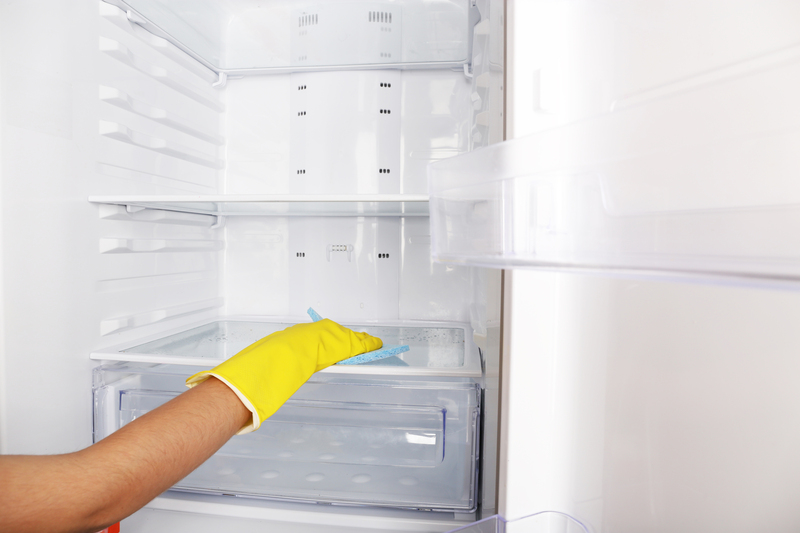Your Guide to Removing Stubborn Burnt-on Residue from Stovetops
Posted on 07/06/2025
Your Guide to Removing Stubborn Burnt-on Residue from Stovetops
Is your once-pristine stovetop marred by tough, burnt-on residue? If so, you're not alone. Many home cooks struggle with removing stubborn, baked-on grime from gas, electric, glass, and ceramic stovetops.
Fortunately, with the right methods and products, you can restore your stovetop to its sparkling glory. In this comprehensive guide, we cover effective ways to clean tough burnt residue, offer tips for various stovetop types, and share preventative advice for keeping your kitchen looking its best.

Understanding Burnt-on Residue and Why It's So Tough to Remove
Burnt-on residue is the crusty, blackened layer that forms when food spills, sauces, or oils are cooked at high heat and left on your stovetop. These layers become increasingly carbonized over time, making them incredibly difficult to remove with just a wipe-down. Common causes of stubborn stove stains include:
- Pots boiling over
- Splattered oil and sauces
- Food droppings left unattended
- Lack of regular cleaning after use
When residue burns on and cools down, it fuses to the surface, especially on glass and ceramic stovetops. Over time, these stains can become permanent if not addressed effectively.
Preparing to Remove Tough Burnt-on Stovetop Grime
What You'll Need
Gather your cleaning materials before you begin:
- Baking Soda and white vinegar (natural cleaners)
- Cream cleaner or stovetop cleaner
- Non-abrasive sponge and/or soft cloth
- Plastic scraper or razor blade (for glass/ceramic)
- Dish soap
- Microfiber towels
- Rubber gloves
If you're working with a gas stove, ensure all burners are off and cool before starting. For electric or induction cooktops, unplug or turn off the appliance.
Top Methods For Removing Burnt-on Residue from Different Stovetops
1. The Baking Soda & Vinegar Method (All Stovetops)
Baking soda is a gentle abrasive, and vinegar helps dissolve grease, making this combo a powerhouse for kitchen cleaning tasks. Here's how to tackle even the most stubborn burnt residue:
- Saturate the burnt area with a generous sprinkle of baking soda.
- Spray or carefully pour a small amount of white vinegar over the baking soda, allowing it to fizz.
- Let the mixture sit for 10-20 minutes. The fizzing action helps break down baked-on mess.
- Gently scrub using a non-abrasive sponge or soft brush. Avoid steel wool, which can scratch surfaces.
- Wipe clean with a damp microfiber towel, then buff dry.
Tip: For especially stubborn burnt stains, make a thick paste of baking soda and water. Apply, let it sit overnight, and then scrub gently the next day.
2. Using Stovetop Cleaner or Cream Cleanser (For Glass/Ceramic Stovetops)
Many manufacturers recommend specialized stovetop cleaners, which are formulated to dissolve tough grime without damaging the glass or ceramic surface.
- Apply the cleaning cream to cooled, stained areas.
- Let it sit for the time indicated by the manufacturer (usually 5-10 minutes).
- Use a soft, damp cloth or non-abrasive sponge to wipe the residue away.
- For thick, burnt-on layers, gently use a plastic scraper at a 45-degree angle.
- Buff the surface with a clean, dry microfiber towel for a streak-free finish.
Note: Never use steel wool, metal scouring pads, or abrasive powders on glass or ceramic as you risk scratching the surface.
3. Dish Soap and Hot Water Soak (For Gas Stovetop Grates and Burner Caps)
Removable parts from gas stoves, like grates and burner caps, can be soaked and scrubbed with dish soap:
- Fill your sink with very hot or boiling water, and add a squirt of degreasing dish soap.
- Submerge the grates and burner caps for at least 30 minutes (or longer for dense buildup).
- After soaking, scrub vigorously with a stiff brush or non-abrasive pad.
- For stubborn spots, sprinkle with baking soda and scrub again.
- Rinse thoroughly, dry, and replace on your stovetop.
4. The Razor Blade Scraper Technique (Glass or Induction Stovetops Only)
Hard, flat burnt patches on glass or induction cooktops can sometimes only be removed with a razor blade scraper. Here's how to do it safely:
- Always use a new, clean razor blade and a designated scraper tool.
- Hold the blade at a 45-degree angle and gently scrape under the burnt-on layer. Go slowly and never use the corner of the blade.
- Wipe away loosened debris and repeat as needed.
- Follow up by cleaning the area with a stovetop cleaner and microfiber cloth.
Important: Test on a small, inconspicuous area first and never use blades on enamel, painted, or easily scratched surfaces.
5. Hydrogen Peroxide & Baking Soda Paste (For Severe Cases)
For some burnt stains that resist all else, combine hydrogen peroxide and baking soda:
- Mix baking soda with hydrogen peroxide to form a paste.
- Spread the paste onto burnt areas and let sit for at least 15-30 minutes (or up to an hour for heavy deposits).
- Scrub gently with a soft sponge, rinse, and wipe dry.
Special Tips for Each Stovetop Type
How to Remove Burnt-on Food From Gas Stovetops
- Remove burner grates and caps first for a deeper clean.
- Scrape loose debri with a plastic scraper before applying any cleaner.
- Use soapy water, baking soda paste, or a degreaser for cleaning the surface under the grates.
- If burners are removable, check the manufacturer's instructions before soaking or scrubbing.
- Always ensure parts are dry before reassembling.
Cleaning Burnt Residue Off Glass or Ceramic Cooktops
- Wait until the surface is completely cool to prevent cracking.
- Wipe away loose crumbs or spilled material first.
- Use a designated glass cooktop cleaner for stains that don't budge with home remedies.
- Apply gentle pressure when using a scraper to avoid scratching.
- Never use harsh abrasives, which can permanently mar the surface and void warranties.
Tips for Electric Coil Stovetops
- Unplug coils before cleaning for safety.
- If residue is stuck on the reflector pans, remove and soak them in hot soapy water.
- Wipe coils gently with a damp cloth--never submerge coils in water.
- For the metal drip pans, use baking soda or a mild kitchen degreaser to scrub off burnt-on material.
Preventative Maintenance: Keep Your Stovetop Spotless
1. Clean Spills Immediately
The best way to avoid tough, burnt-on stains is to address spills as soon as they happen. *A quick wipe-down after every use greatly reduces the chances of future buildup.*
2. Use Proper Cookware
Damaged, warped, or dirty pots and pans are more likely to spill over. Always use well-maintained cookware and avoid overfilling.
3. Regular Deep Cleaning
- Once a week, remove and soak grates, burner caps, or drip pans as appropriate for your stove.
- Clean all surfaces with a soft cloth and gentle cleaner, even if stains aren't visible.
4. Protect High-Traffic Areas
On gas and electric coil stoves, consider using splatter guards or disposable covers to reduce direct contact with grease and sauce.

FAQs About Removing Stubborn Burnt-on Residue from Stovetops
- Q: What is the safest way to clean a glass cooktop?
A: Use baking soda and vinegar, a non-abrasive sponge, and a plastic or razor blade scraper designed specifically for glass. Never use harsh scouring pads or cleaning powders. - Q: Can I use oven cleaner spray on my stovetop?
A: Avoid using oven cleaner on glass, ceramic, or induction cooktops as it can damage the finish. Only apply to enamel or metal surfaces according to the product's directions. - Q: What should I do if stains won't come off?
A: Apply a baking soda paste overnight, use a designated stovetop cleaner, or resort to gentle scraping as a last resort. Persistent stains on glass may require several attempts. - Q: How often should I clean my stovetop for best results?
A: Wipe after every use and deep-clean at least once a week to prevent stubborn burnt-on residue buildup. - Q: Is it safe to use magic erasers or melamine sponges?
A: Yes, on some stovetop surfaces, but always do a spot test first as these pads can be mildly abrasive and could dull glossy finishes over time.
Final Thoughts: Achieving a Spotless, Residue-Free Stovetop
Removing stubborn burnt-on residue from stovetops is challenging but very achievable using the right combination of techniques. Whether you're working with a gas, electric, glass, or ceramic cooktop, regular cleaning and prompt attention to spills are key to a sparkling kitchen.
By following these proven tips on how to remove burnt-on residue on your stovetop, you'll enjoy a cleaner cooking space, prevent permanent stains, and preserve the lifespan of your appliance. For ongoing shine, remember to clean up spills promptly, use gentle cleaning methods, and always consult your manufacturer's care recommendations for your specific stovetop model.
Now that you know how to tackle even the most stubborn burnt-on food residue, you can cook with confidence and pride in your spotless stovetop.





